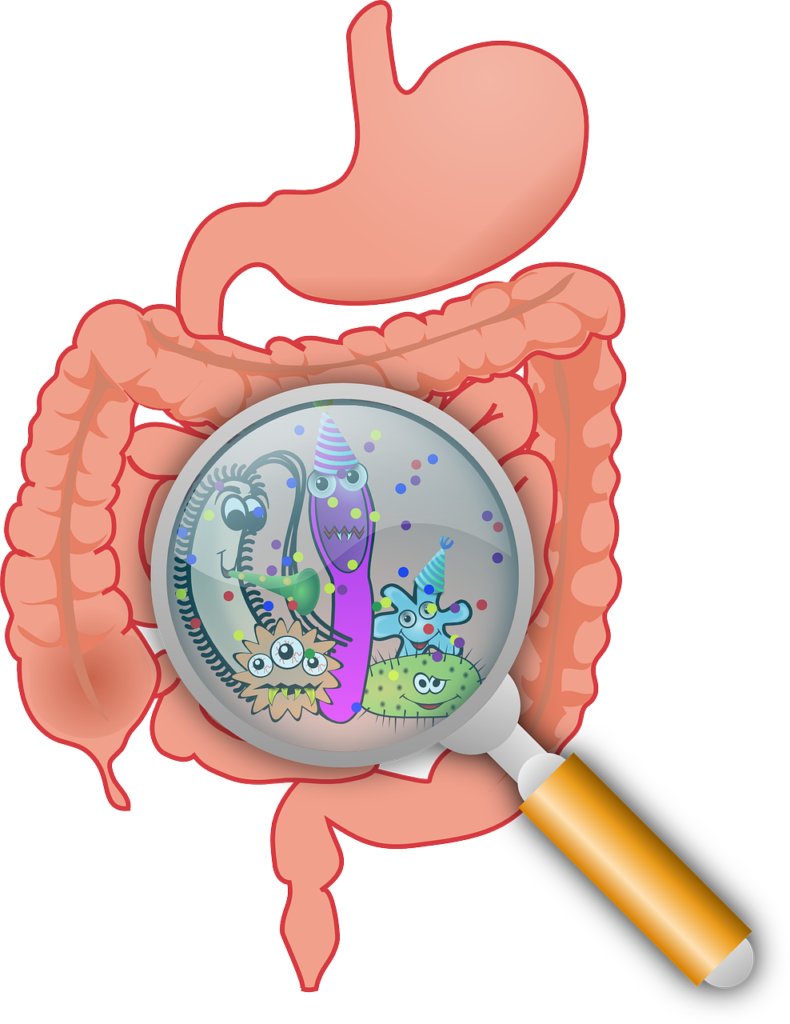
When I was a young nurse, we routinely poured betadine over the laboring mother’s perineum. We believed that the newborn should not be exposed to that dirty bacteria. The myth was that “bacteria” was dirty and therefore harmful! Over the years, we’ve learned a lot about germs and gut bacteria.
Here are six myths that seem to persist, and the facts you need to know.
1. Myth: Bacteria are all bad, dirty germs
Fact: Not all bacteria are “bad.” Certainly, some bacteria are harmful and pathogenic. But there are “friendly” bacteria, too. For example, gut bacteria such as bifidobacteria and lactobacilli, are critical for optimal immune function.
Human milk is naturally rich in these friendly bacteria, which boost health for babies who are exclusively breastfed. But research has shown that supplementing with artificial infant formula alters the amount of friendly bacteria and harmful bacteria in your baby’s gut.
2. Myth: A newborn’s gut only has a few bacteria
Fact: There are hundreds of unique species of bacteria in the newborn’s gut! These gut bacteria play a vital role in setting up the baby’s immune system for the rest of his life. Ideally, those species are mostly the same as the mother’s or the family’s bacteria. The baby isn’t designed to cope with bacteria that are in the operating room, the corridor, or on the nurse’s hands.
3. Myth: A newborn’s first exposure to bacteria comes from what they eat
Fact: Certainly, babies are exposed to bacteria through what they consume, whether it’s the mother’s milk, or artificial infant formula. But, before that, they are exposed to bacteria during childbirth. Although we didn’t know it back in the betadine-during-labor days of my early career, now we know that the “seeding” of bacteria at this time is a critical element in developing a lifelong immune function.
4. Myth: Bacteria don’t really stick around
Fact: Like any other living organism, bacteria need food to survive! In this case, the most optimal food for the friendly bacteria are the oligosaccharides (oligo means small + saccharides means sugar) in the mother’s milk.
They do stick around, from the “seeding” of the gut bacteria during childbirth through the “feeding” of that bacteria through the oligosaccharides in the mother’s milk. Kirsty LeDoare gives a fabulous explanation of how these oligosaccharides work. And, Dr. LeDoare reminded us every baby needs a sugar mama! (No, I’m not making it up, see for yourself!)
5. Myth: With a cesarean, there is no way to create the microbiome
Fact: Unquestionably, being born by cesarean surgery alters the baby’s microbiome. If you look at mammals, you will see that they deliver their offspring near the mother’s anus. That’s so the baby can become covered with the mother’s gut bacteria. With a cesarean, that kind of exposure doesn’t happen. Neu and Rushing cite several studies showing that “[d]ifferences in delivery mode have been linked with differences in the intestinal microbiota of babies.”
6. Myth: Sometimes, it’s just too late to create gut bacteria for your baby
Fact: It’s never too late! Filmmaker Toni Harman enumerated many ways to protect or improve your baby’s microbiome (You might also want to read Harman’s book, The Microbiome Effect: How Your Baby’s Birth Affects Their Future Health.
“Bacteria” is still a dirty word in many circles. But where it comes digestive health, we’ve learned to respect bacteria for the “seeding and feeding” they provide to the newborn’s immune system. And, we now know we’ve got to keep hands-off the betadine and embrace gut bacteria as beneficial for our babies’ overall health.
What do you think of this seeding and feeding idea? Let me know in the comments below.
